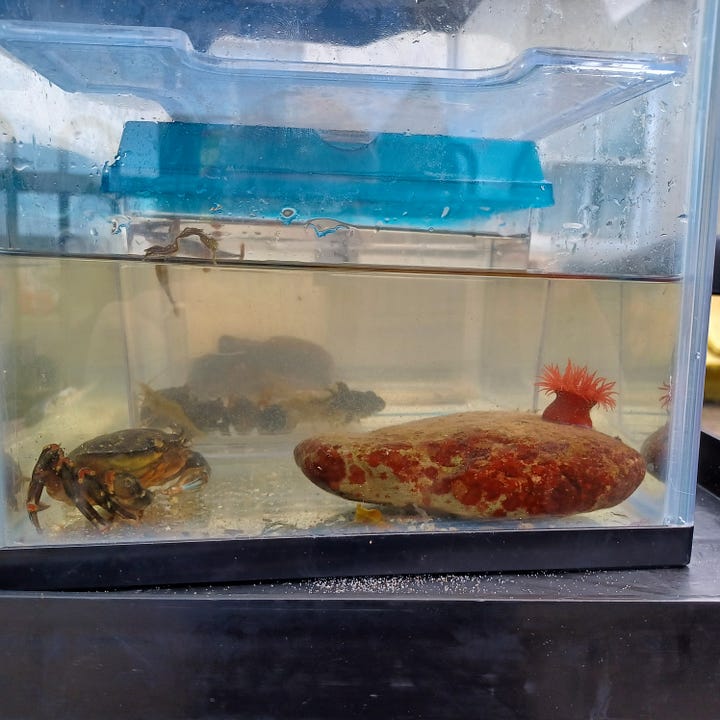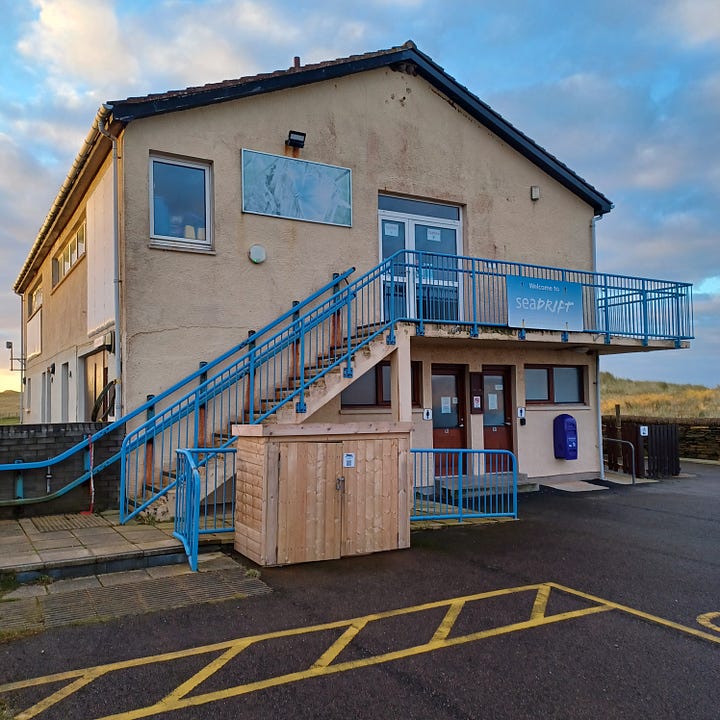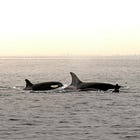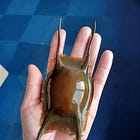One wonderful aspect of being as a countryside ranger, is you are sometimes blessed with witnessing amazing opportunities provided by nature. Sometimes these may be impressive sightings of a rare or magnificent species of mammal or bird, other times they are special glimpses of beautiful, tiny aspects of the natural world hidden to others.

The other day a headline for an online article popped up on my phone which caught my eye. I didn’t open it but the headline was all about someone finding a small pearl in a plate of mussels, which was then incorporated into a piece of jewellery. I’m not sure how often finding a mussel pearl occurs in restaurants but it did remind me of one of those special ‘nature’ moments I referred to earlier.
Years ago when the Seadrift Ranger Base at Dunnet Bay was operating as a visitor centre, we kept a couple of seawater tanks in there. People loved viewing the creatures we displayed, including small fish, shrimps, periwinkles and of course shore crabs. To ensure the creatures were kept cool, it took a lot of work collecting fresh seawater each day and topping up the tanks.


It was fascinating watching the antics of some of the tank residents. The sea scorpion fish were always one of my favourites. After a few days in the tank they would soon learn that people meant food. They would race to the surface at feeding time to snatch any morsal from your fingers, just like a pet.
One day a local ‘pot’ fisherman kindly brought us a sizeable, common starfish Asterias rubens, which was captured in one of his crab pots. Common starfish love a mussel to eat and so the quest began to collect mussels to feed to it. A local low tide mark was identified and regular foraging trips by me, kept our five-arm friend well supplied.

Starfish have no relation to fish at all but are actually marine invertebrates known as echinoderms (spiny skinned), which also include sea urchins and sea cucumbers. Starfish are able to regenerate parts of their body such as arms which may be missing due to attacks by predators. Did you know, starfish eyes are found at the end of each arm?
It’s fascinating to watch a hungry starfish wrap its sucker filled arms around a mussel shell and begin applying pressure. This constant pressure to both sides of the shell weaken it and eventually the mussel opens very slightly. At this point the starfish’s stomach is inserted inside the mussel and digestive juices dissolve the fleshy parts, before reabsorbing the stomach complete with shellfish soup contents.
This particular morning I arrived at the centre and as usual first job was to inspect the tanks to ensure all was well. Overnight the starfish had been busy devouring several mussels.
To my utter amazement, there laying on the gravel was an opened mussel shell, with a perfect miniature pearl sitting right in the centre. It looked for all the world like a diner’s tip left following a well enjoyed tasty meal.
A mussel pearl begins, when some form of foreign matter such as a parasite or other matter enters the mussel during feeding or respiration. The mussel responds by surrounding the matter with a substance known as nacre (pronounced nay-kah). This is a combination of a protein known as conchiolin and a calcium mineral called aragonite. Both these substances form the hard iridescent ‘mother of pearl’ inner shell of the mussel. The more layers of nacre produced, the larger the finished pearl will be.
I was absolutely delighted with my amazing gift and to this day I still have this tiny (4mm) white pearl. Although only tiny, this natural marvel is still one of my favourite finds. I have often thought about possibly getting it incorporated into a peice of jewellery, just like in the online article. Maybe I will, maybe I won’t? Regardless, it remains a precious item and precious memory for me.
Paul Castle is the dedicated Countryside Ranger for North Sutherland and North Caithness with High Life Highland. Paul has devoted over two decades, to the ranger service of this area. His commitment reflects his love for the area, marked by its breathtaking landscapes, diverse wildlife, friendly communities and rich natural heritage. Paul's work plays a pivotal role in promoting and protecting the wildlife, flora, and fauna that make this part of Scotland so extraordinary.








